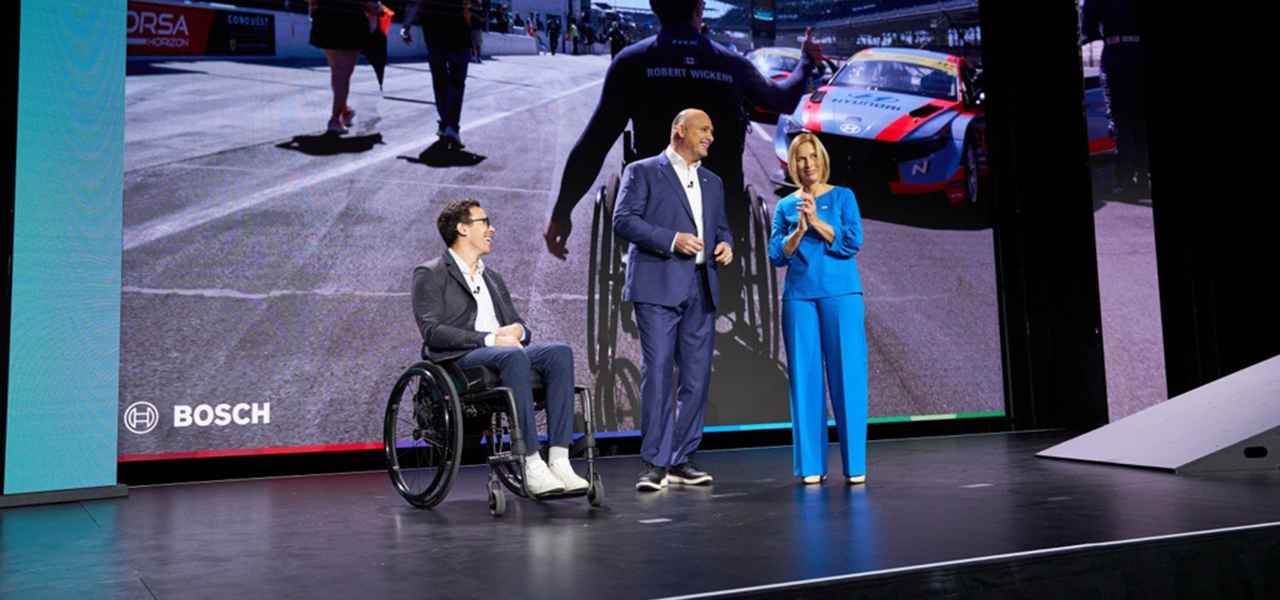 在CES 2025上,赛车手Robert Wickens与博世北美区总裁Paul Thomas及博世董事会成员Tanja Rückert一起在台上就博世研发的制动手控器进行交流。正是得益于这项创新技术,Wickens才能够在2018年遭遇严重车祸后重返赛场。(Steve Fecht)
在CES 2025上,赛车手Robert Wickens与博世北美区总裁Paul Thomas及博世董事会成员Tanja Rückert一起在台上就博世研发的制动手控器进行交流。正是得益于这项创新技术,Wickens才能够在2018年遭遇严重车祸后重返赛场。(Steve Fecht)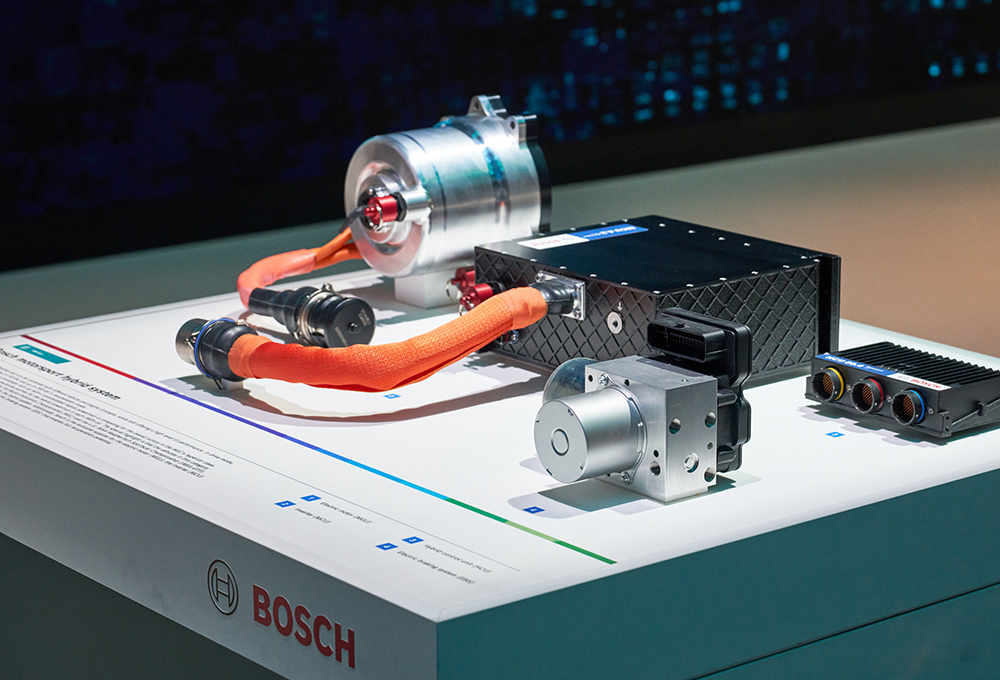 博世赛车运动混动部件在2025年美国消费电子展(CES 2025)上展出。博世赛车运动是每辆LMDh汽车混合动力系统的独家合作伙伴。(Steve Fecht)
博世赛车运动混动部件在2025年美国消费电子展(CES 2025)上展出。博世赛车运动是每辆LMDh汽车混合动力系统的独家合作伙伴。(Steve Fecht)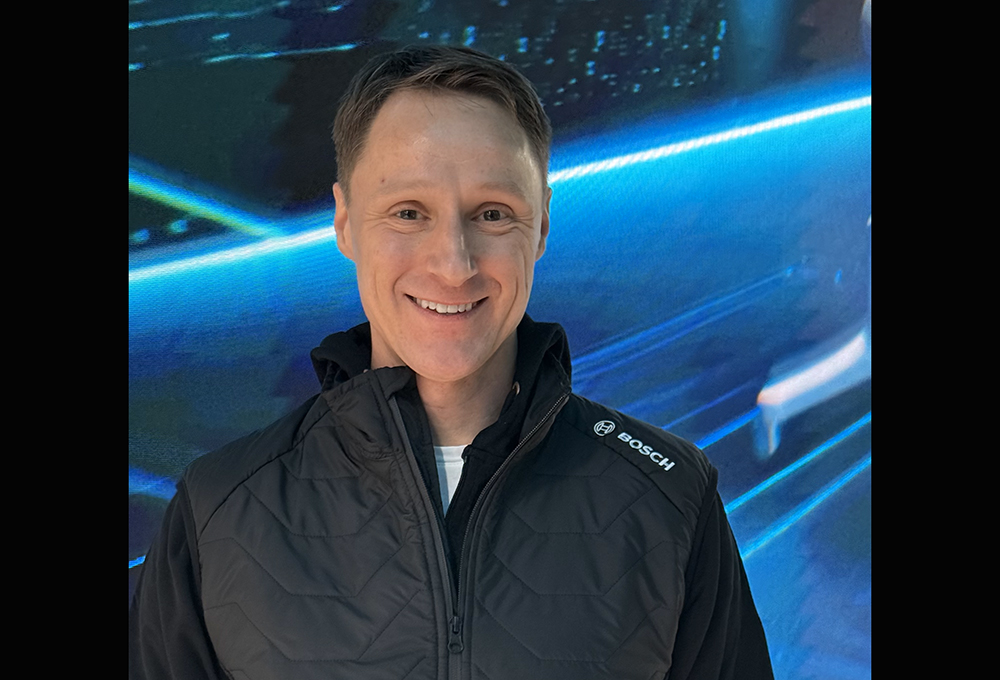 博世北美赛车运动总监 Jacob Bergenske(Sebastian Blanco)
博世北美赛车运动总监 Jacob Bergenske(Sebastian Blanco)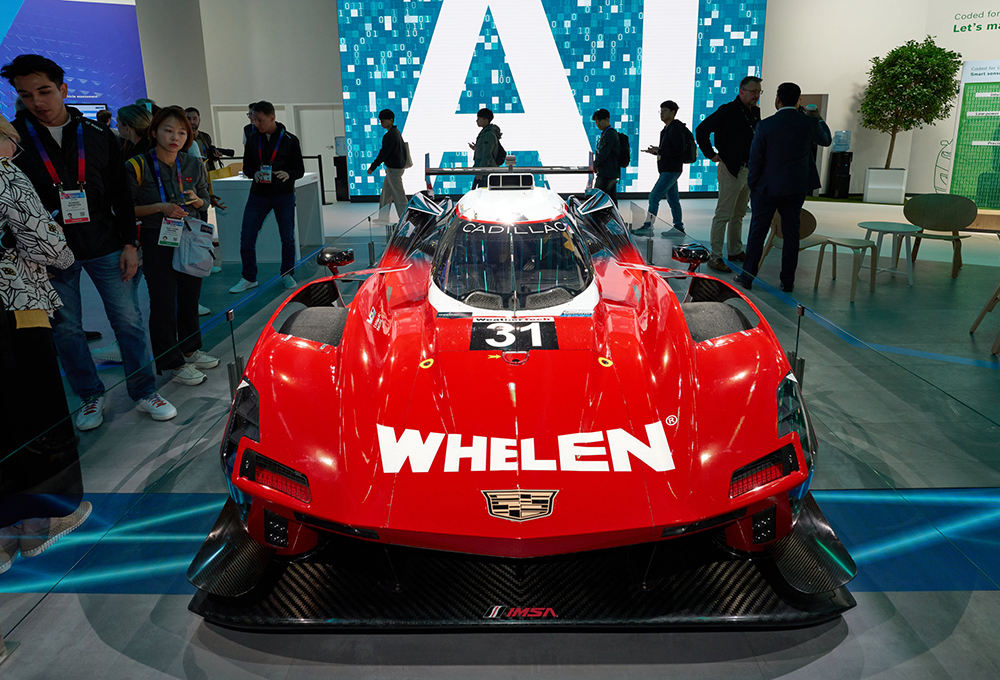 Whelen Engineering Cadillac Racing 的 WeatherTech SportsCar Championship 第 31 号赛车。(Steve Fecht)
Whelen Engineering Cadillac Racing 的 WeatherTech SportsCar Championship 第 31 号赛车。(Steve Fecht)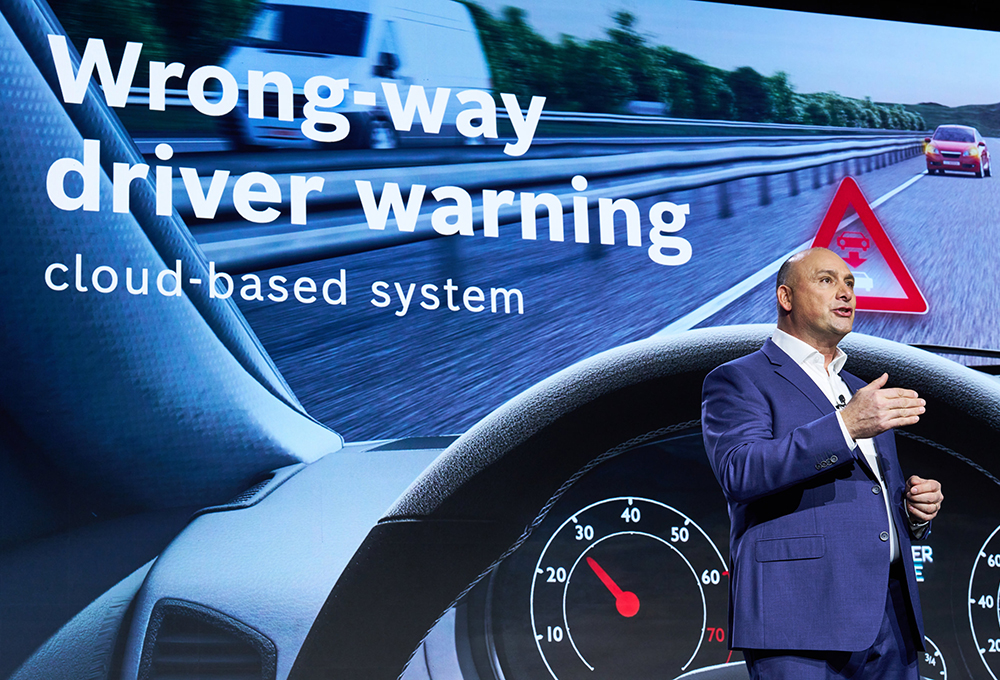 博世北美区总裁Paul Thomas在拉斯维加斯举行的2025年消费电子展上发表讲话。(Steve Fecht)
博世北美区总裁Paul Thomas在拉斯维加斯举行的2025年消费电子展上发表讲话。(Steve Fecht)
博世公司正致力于在SiriusXM Connect移动安全app中集成场景安全通知功能,而这仅为博世在CES 2025上推出的众多技术之一。
博世在2025年国际消费电子展(CES 2025)上展示了其在安全、无障碍和人工智能技术方面取得的最新成果。博世表示,这些技术将对两类群体产生重要影响:第一类是采用博世软硬件的汽车的驾驶员,第二类是在看台上观看采用这些技术的赛车的观众。
第二类涉及的赛车可能会用到博世与赛车手Robert Wickens合作研发的新款制动手控器。Wickens在2018年的一次撞车事故中严重受伤,但此后他凭借这类设备成功重返赛场。在代表Bryan Herta Autosport驾驶现代伊兰特N TCR参赛时,Wickens就使用了上述的新款制动手控器,但该设备实际上是博世向LMDh级赛车供应的电动制动系统的升级版——在线控制动技术的基础上,通过配备软件以平衡电机制动和传统液压制动产生的扭矩。这一定制软件还允许Wickens通过其已有的手控器将压力信号转换为实际的制动操作。博世北美赛车运动总监Jacob Bergenske在接受SAE采访时表示,工程团队仍在改进该控制器的手感。
他表示:“人类能够通过触觉感知信息真是太不可思议了。Wickens越是能够通过双手精准感知制动的临界点,同时我们系统提供的反馈精度越高,他的驾驶速度就会越快。与他之前使用的控制系统相比,新控制器的性能得到了大幅提升。在某些操作中,其响应速度甚至提升了10倍。”
2025年,Wickens将驾驶配备最新款制动手控系统的雪佛兰科尔维特Z06 GT3.R在国际汽车运动协会(IMSA)主办的卫士泰克跑车锦标赛(WeatherTech SportsCar Championship)上首次亮相。Bergenske表示,团队在该项目中积累的软件经验,还可为其它团队研发更先进的制动手控系统提供参考。
他表示:“该项目不仅关乎Robert个人,更是为了向那些因残疾认为自己无缘驾驶高性能赛车的人提供机会。”
博世的这套云系统能够跟踪车辆上下高速公路的情况,并利用匿名数据来判断车辆是在正常行驶还是逆向行驶。Thomas在CES上表示,只要驾驶员已经安装了SiriusXM Connect应用程序,就能够启用博世的逆行警报系统,无需额外安装任何硬件。他表示,与SiriusXM Connect集成后的博世技术能够精准地针对身处危险的驾驶员发出警报。
他表示:“众所周知,新政府是否会向先前一样大力支持氢能发展仍存在较大的不确定性。我们很荣幸与美国能源部(DOE)建立了紧密的合作关系。对于美国目前的氢能生产情况,以及氢能在燃料电池(或可燃氢应用)中的使用情况,我们非常满意。同时,我们仍与一家生产氢能卡车、并涉足可燃氢业务的大型商用车制造商保持着合作伙伴关系。目前我们正与政府就这些卡车是否符合零排放标准进行深入探讨。未来的监管环境如何变化,我们拭目以待。”
Bosch took to CES 2025 with positive messages about its safety, accessibility and AI technologies, which it said will impact both the people who drive vehicles with its hardware and software inside and those might be watching such a vehicle from the bleachers.
A racecar that would fit Into that latter category might use the new hand brake controls that Bosch developed along with motorsport race driver Robert Wickens. Wickens was badly hurt in a crash in 2018 but has since returned to racing using vehicles with hand controls. Wickens uses the new hand brakes in the Hyundai Elantra N TCR he drives for Bryan Herta Autosport, but they are an updated version of the electric brake system Bosch supplies for the LMDh class. Based on brake-by-wire technology, the hand brakes have software that balances the braking torque from the motor and the traditional hydraulic brakes. Bespoke software also allows Wickens to use the brakes with his pre-existing hand controls, translating pressure signals into actual breaking events. Jacob Bergenske, Bosch’s director of motorsport for NorthAmerica, told SAE Media that the engineering team is still improving the feel in the controls.
“It's amazing the perception that a human has through touch,” he said. “The more that [Wickens] can perceive that threshold of breaking in his hands, and we can give the proper kind of feedback, the faster he's gonna be. Where we're at right now is a massive step forward from what he had with his previous system. In certain events, we have literally 10x improved in responsiveness.”
In 2025, Wickens will make his debut in IMSA’s WeatherTech SportsCar Championship with a Corvette Z06 GT3.R that will use a newer iteration of the hand brake system. Bergenske said the software learnings that the team made on this project could be used to make better hand brake controls for others.
“This is not just about Robert,” he said. “It’s about providing people opportunities who never thought that they would have had those opportunities before, people who never thought they would be able to drive a high-performance race car because they have a disability.”
The right move on wrong-way driving
At the same press event at CES, Paul Thomas, president of Bosch North America, announced that the company’s wrong-way driver warning system will likely be coming to the new SiriusXM Connect mobile safety app in the near future. The reasons this technology would be beneficial are obvious, Thomas said, since there were over 700 wrong-way driving fatalities recorded in 2022, according to data from the U.S. Federal Highway Administration (FHA). The FHA has been concerned about wrong-way driving since at least 2012, when it published the results of a study conducted with the Michigan Department of Transportation (MDOT) that found that darkness and driver impairment resulted in higher wrong-way drivers and that wrong-way crashes were “highly severe.” The study found that 32% of wrong-way crashes resulted in at least one fatality or incapacitating injury, compared to 2% of all Michigan freeway crashes.
Bosch’s cloud-based system tracks vehicles as they get on or off a highway and uses anonymized data to tell if a vehicle is moving with or against traffic. Bosch’s wrong-way alert system does not require any supplemental hardware as long as they have SiriusXM installed, Thomas said at CES. Integration with SiriusXM Connect will allow Bosch’s technology to only alert people who are in the line of danger, he said.
“If you're on the road, [and someone is] traveling towards [you in a] car that's coming the wrong way, you will get an announcement audibly and potentially visually over your radio or over your sound system that says you have a wrong-way driver coming towards you,” he said. “It will also trigger the person that's driving the car in the wrong direction to say that they're moving in the wrong direction.”
But alerts are as far as Bosch wants to go for now. The technology wasn’t developed to take control of a vehicle going the wrong way, Thomas said, adding that there are likely legal restrictions against this kind of control. Still, Bosch is “actively working” to bring these wrong-way driver alerts to more vehicles and smartphones through other collaborations, Thomas said, adding that Bosch is not developing this to make money.
“I would give this technology away to save lives, if it was starting to be used,” he said.
Software, AI and hydrogen
One thing Bosch’s CES announcements have in common is software. Thomas said even as the company leans into AI and more software development – the company’s new slogan is “Coded #LikeABosch” – he remains a “balanced guy.”
“I'm never going to say we're going to go all in the software or all in the hardware,” he said. “I'm always going to find a level of balance between both. We still want to be a very strong hardware supplier because you need great actuators in your vehicle, or steering gears or braking systems, or whatever it may be.”
One place where Bosch is advancing its hardware development is with the hydrogen economy. Thomas said that even though the H2 market has slowed a bit, in general, Bosch remains involved with its government and corporate partners, including by developing better electrolyzer technology in order to produce hydrogen energy in the regions where it will be used. Improved pumps are also part of the picture.
“We're still heavily involved in hydrogen,” Thomas said. “With our Rexroth division, we've developed a way to deliver hydrogen in a much more effective way. One of the most inefficient things in the market today is how you fuel a hydrogen vehicle. You lose between 60 and 70% of the energy during the fueling process. Our Rexroth group has developed a new pump that actually delivers the hydrogen in a much more effective way, so you're not losing a lot of the energy to the environment.”
Where the next administration will go when it comes to supporting hydrogen is an open question, Thomas said.
“We all know that the new government might either go as heavy into hydrogen as before, or not,” he said. “We're closely tied with the DOE, and we're happy. We're happy with what we're seeing related to the production of hydrogen in the region and usage either in fuel cells [or combustible hydrogen]. We're still a partner with a large commercial vehicle manufacturer that makes hydrogen trucks and [with] combustible hydrogen, there's lots of discussions now with the government on whether that qualifies as a zero-emission vehicle or not. We’re just going to see how the regulatory environment works out.”
等级
打分
- 2分
- 4分
- 6分
- 8分
- 10分
平均分
